Pacing the uncountables
When you’re on the move and your species is common or sometimes occurs in high densities, you can always count the wild in 10 metre (10 pace) patches.
written Jun 1, 2018 (last updated Oct 6, 2021) • by Jon Sullivan • Category: Wild Counting
Sometimes it all gets too much. I don’t mean this in a hectic modern life way (some days it might be easier living in a pinball machine). I mean counting abundant and widespread wild species, or species that occur occasionally in dense and tangled patches. For example, say that I’ve predetermined that I’ll count all the big (≥ 6 cm diameter) mushrooms I see along a walk. That’s something I’ve been doing for several years. Then, I reach a big patch of hundreds of mushrooms of one species.
I don’t have time to stop and count hundreds of mushrooms! I’m going on a walk. Still, I’ve pre-determined that I’ll count all of that species, so I have to count them. What can a dedicated counter of the wild do?
My solution to this conundrum is WildCounts’ 10-pace-section-counts. I don’t count every individual mushroom I see. Instead, I record everywhere I see each species in 10-pace (approximately 10 m) sections, usually restricted to within 5 m either side of my route (the WildCounts “close” distance).
I use p in WildCounts shorthand for 10-pace sections. For example, one 10-pace patch (1p) of fly agaric (Amanita muscaria) within 5 m (c for close) on the left (l) would be entered like this:
Amanita muscaria lc1p
Ta dah!
If I later saw it in three consecutive patches on the right, I’d enter that observation like this:
Amanita muscaria rc3p
Two consecutive patches on the left with (*) one patch on the right would be entered like this:
Amanita muscaria lc2p*rc1p
When I note any of these patches on my iPhone, it geotags their locations and date-time stamps the observation. It’s as easy as that.
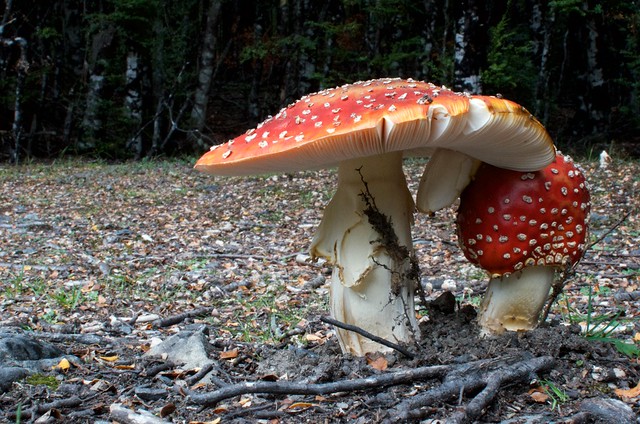
This method lets me keep walking, while still documenting, in a consistent way, the abundance of each big mushroom species along my walk, including where each patch was found. Below is an example of where I’ve found Amanita muscaria along my city to hills run transect in Otautahi Christchurch, New Zealand. I recorded these using the WildCounts 10-pace section method.
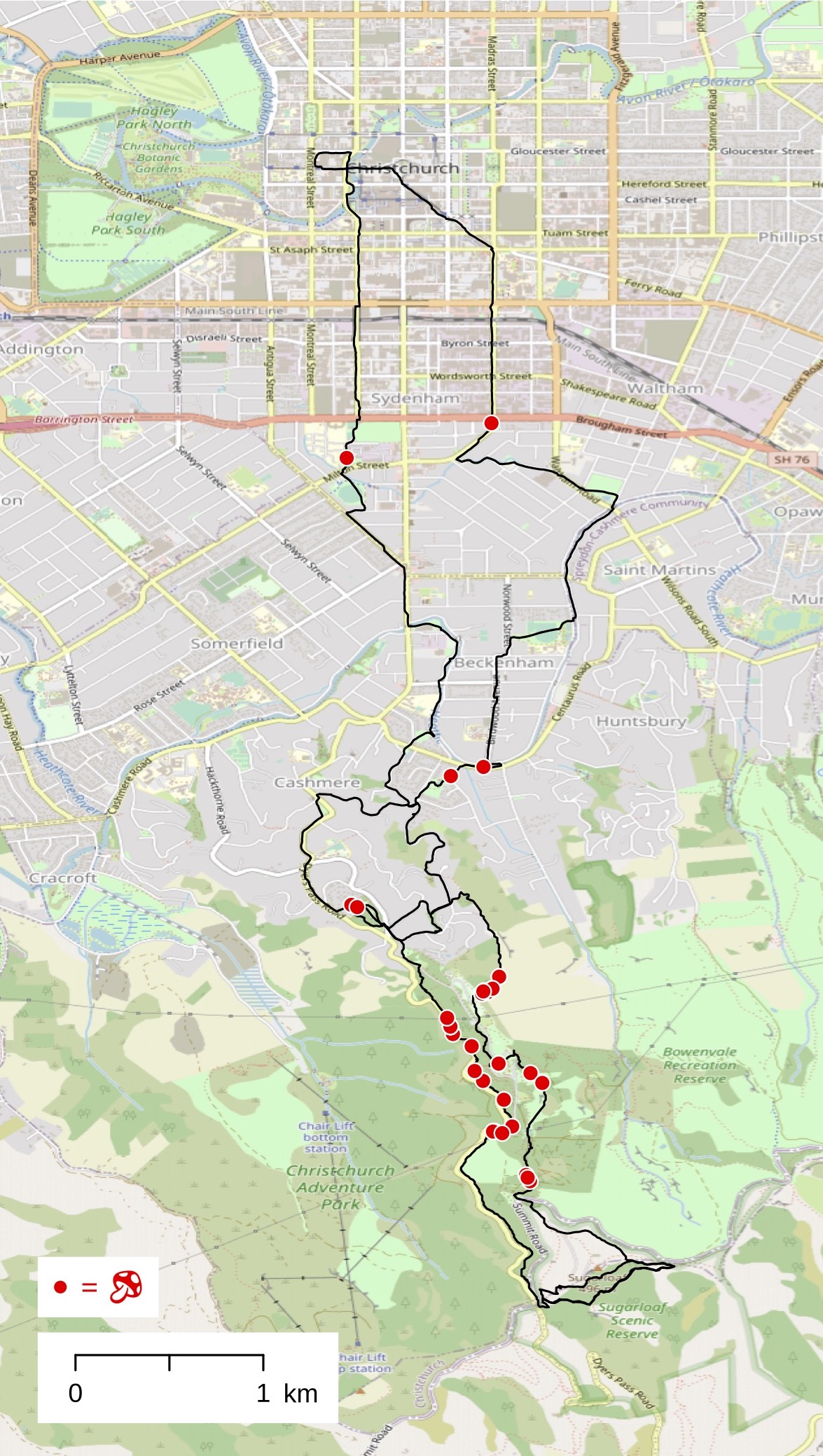
I’ve found that this method works really well. It’s simple and quick to use when I’m walking, running, and biking, and I’ve also used it while a passenger in a car. I’ve been using it for many years to count much more than just big mushrooms. I also use the method to record the distribution and abundance of invasive weeds (I have a different selection of weed species that I map out each month). I also use it for an assortment of plants like senecios, nettles, muehlenbeckias, and brassicas. Those are all host plants for the moths and butterflies I also count.
For example, each month I run a 28.8 km transect (in two parts) from the middle of Christchurch city, New Zealand, across the suburbs and up into the forested hills. It’s a strong gradient in land use from central city commercial through suburban residences and into planted parks then wild nature reserves. That’s the route shown in the map of Amanita muscaria mushrooms above. Counting every individual plant of my pre-determined species would be difficult and slow. In contrast, counting in 10-pace patches is straightforward and practical. With this method, I can map these species along the entire route, and repeat that monthly to show change over time.
The graphs below show the patterns I’ve found in four species of Senecio. These are all small, fast growing herbaceous plants, and are not widespread but can grow in dense patches. Counting every individual would be slow and tedious, but mapping them out in 10-pace patches is quite easy (once I’d got my eye in for spotting them).
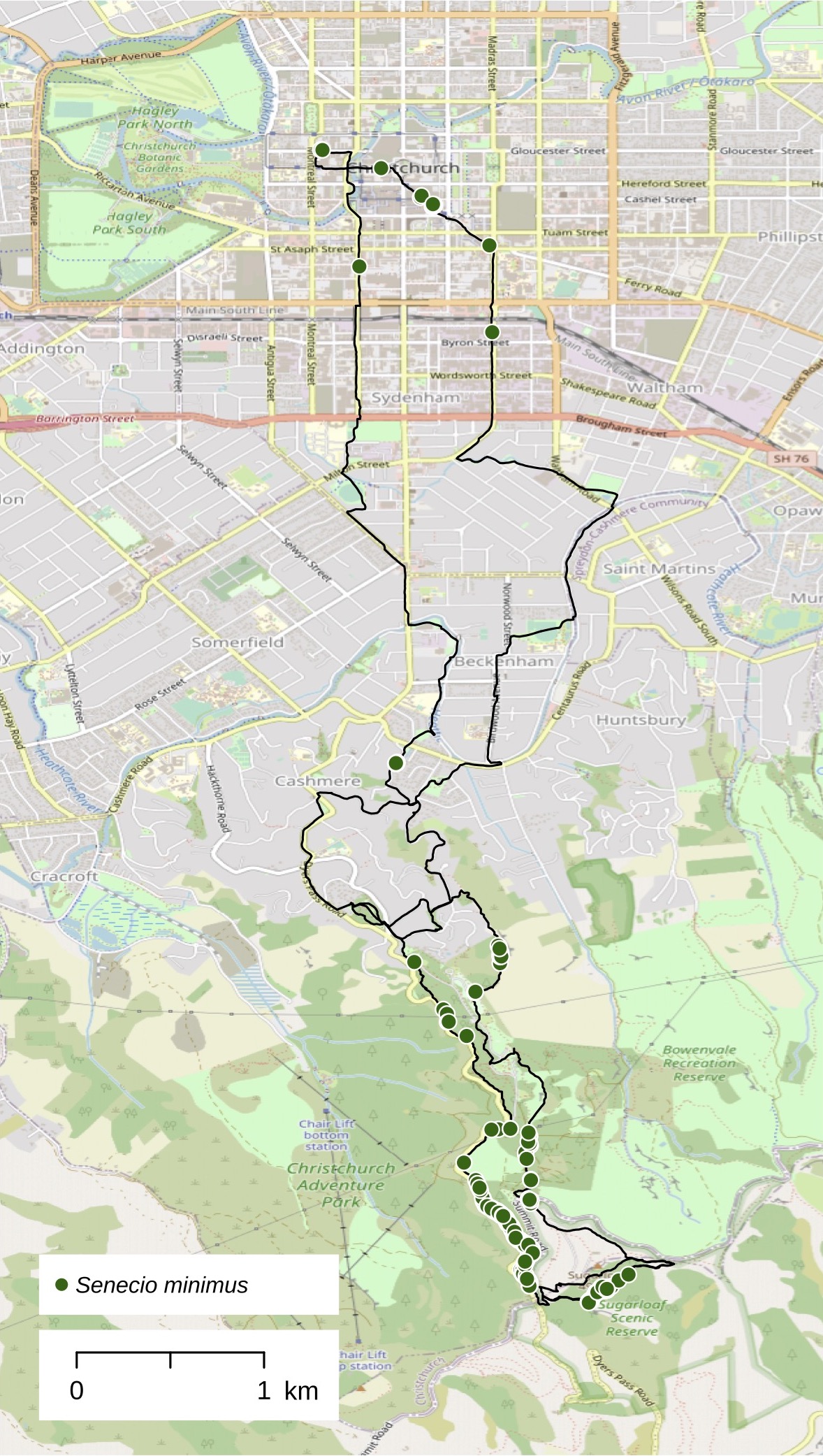
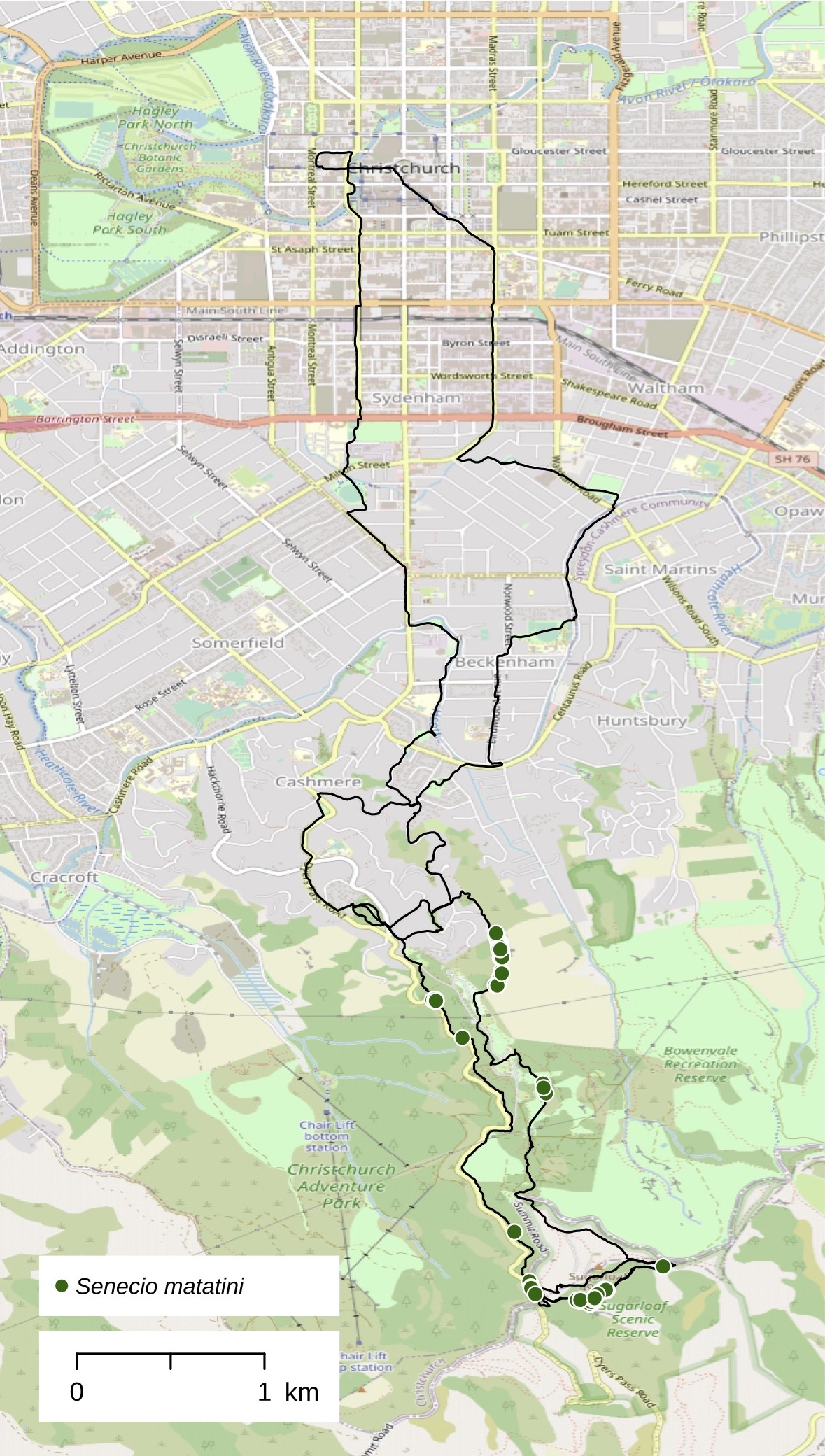
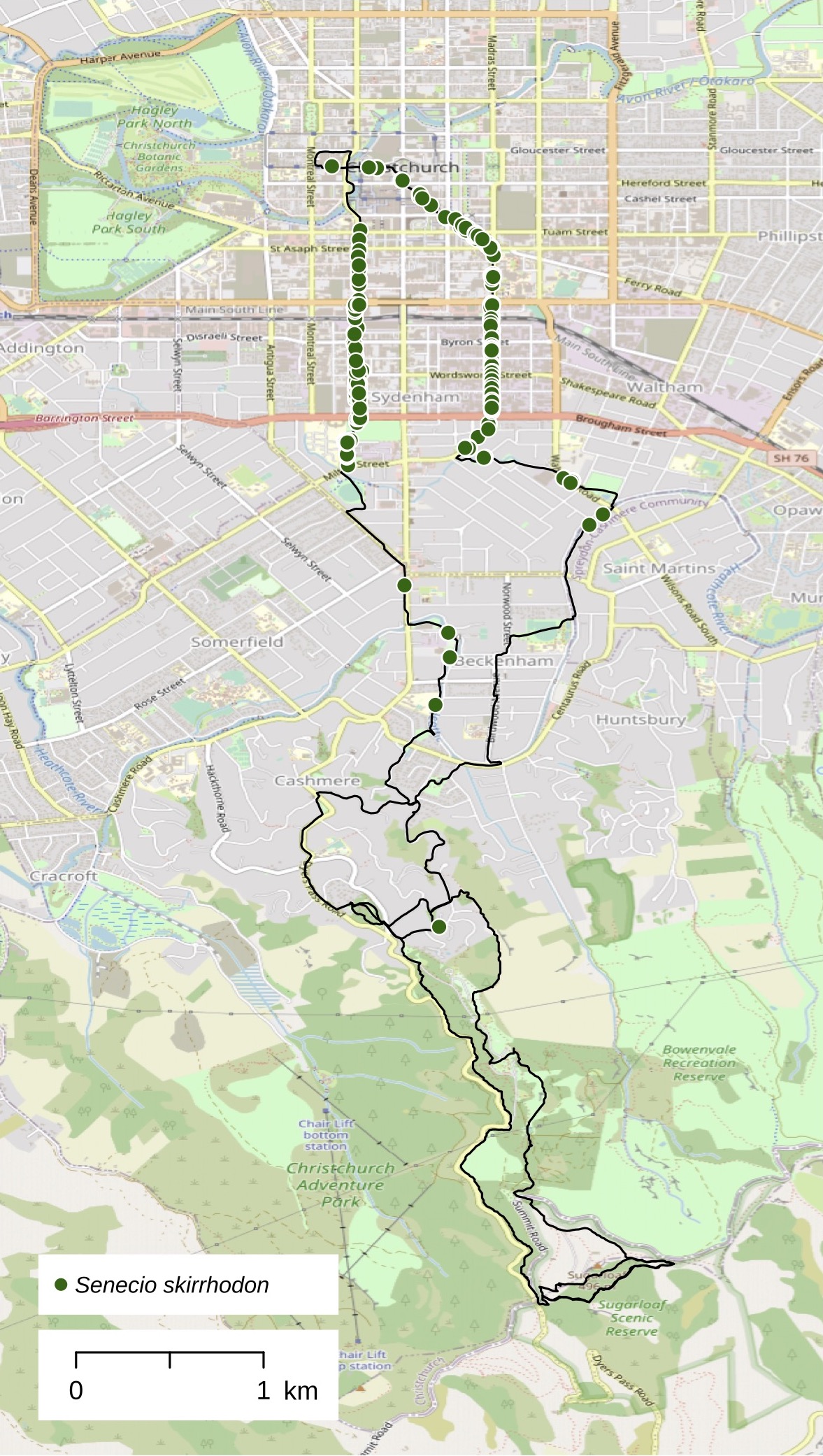
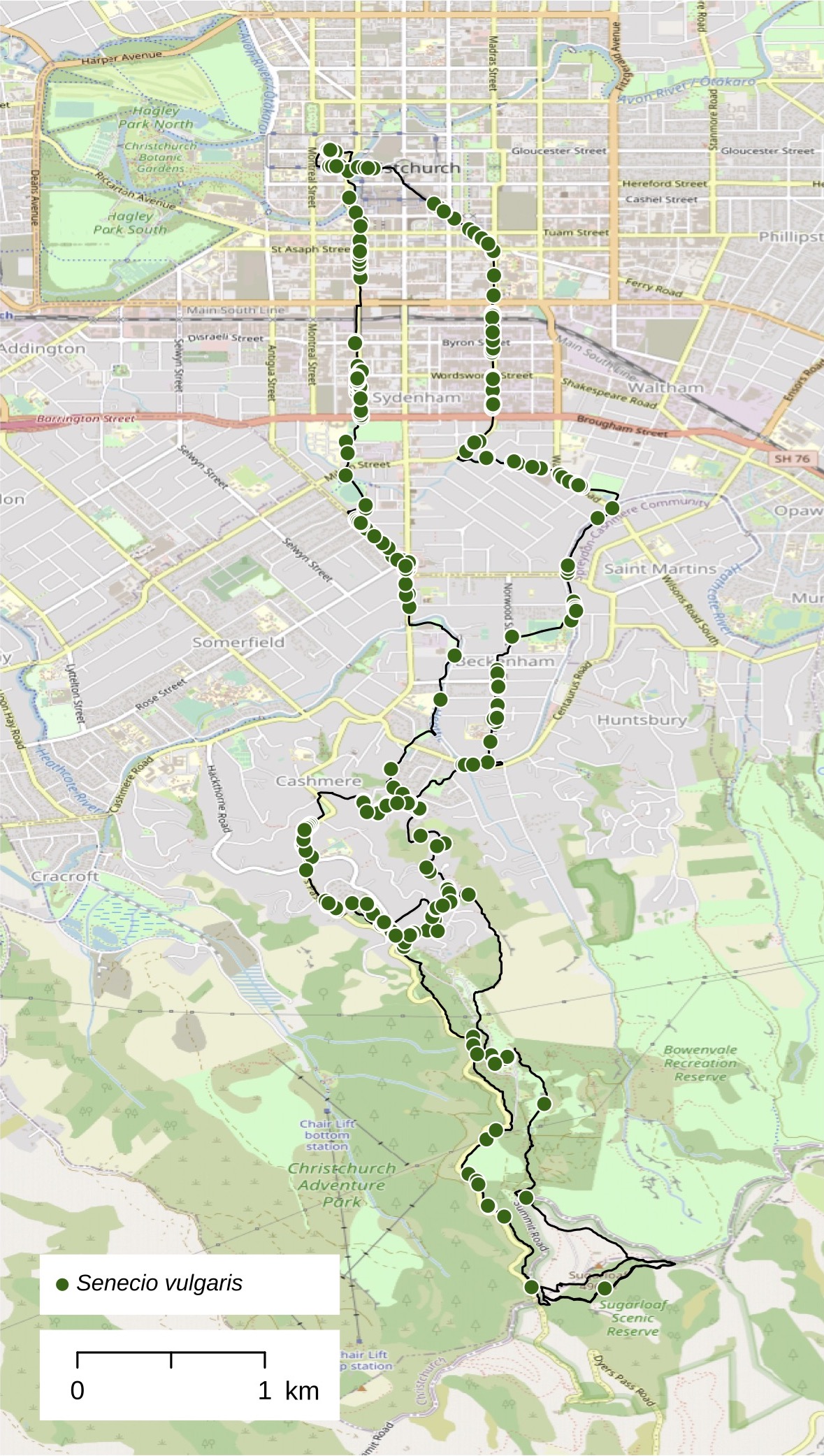
These examples show a strong pattern of native species dominating in the Christchurch hills, and naturalised exotic species dominating in the built city. That’s with the exception of some native species, like Senecio minimus above, that moved into some of the open wild gravel areas of the centre city of Christchurch following the earthquakes and subsequent building demolitions.

Mapping out stationary species, like plants and fungi, in 10-pace patches, is easy to do when species are easy to recognise. A lot of species are easy to recognise with a little practice. This means that wild counts can map these species over long transects, which means that a lot of data can be gathered to document their habitat preferences. That’s especially helpful for uncommon species that are only occasionally encountered.
Since it’s easy to do, this can be repeated as frequently as is appropriate for the species. That can document seasonal as well as long-term changes. Long-lived perennial plants can be counted once a year, while fungi benefit from weekly counting, since they’re so ephemeral (most of the time there’s none to count). I map out senecios at least once a month, because a lot of people regard them as ugly and herbicide them or pull them out, leading to high turnover in suburban areas, plus they’re wind-dispersed and fast growing and so can spread quickly.
A lot of plant ecology and vegetation science is based on data collected from infrequently revisited permanent quadrats and short transects. Those methods are necessary when the goal is to document all plant species at a site. However, if you’re particularly interested in just a few species, there is no need to restrict yourself to meticulous surveys of just a few quadrats and short transects.
With the WildCounts 10-pace section method, your chosen species can be mapped out in detail over large transects, and re-mapped frequently to document seasonal and long-term changes. I see this level of large-scale, high-frequency recording, of some species, as an important and useful complement to traditional quadrat and transect surveys.
Pace yourself
So, there you have it. If your species get so dense that it’s not practical to count them individually, consider counting in 10-pace sections. In our age of rapid environmental change, it’s important that we make wild counts that are repeatable in the future, by us and others. That’s how we’ll uncover trends and understand the diversity of changes happening in nature.